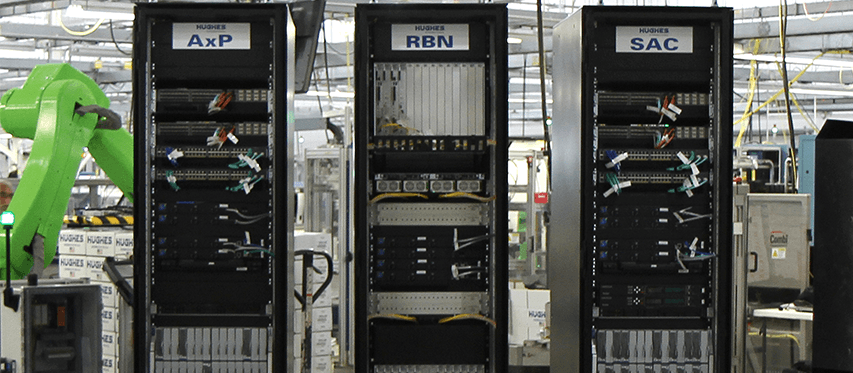
“OneWeb is one of the most advanced and complex low earth orbit (LEO) satellite constellations,” Charles Barnett, senior vice president of Hughes Engineering, explained. When complete, the OneWeb constellation of Low Earth Orbit (LEO) satellites will offer high speed, low latency connectivity globally — over the water, in the air and across places that were previously unconnectable, such as the polar regions.
Under a contract with OneWeb, Hughes is developing and producing the gateway electronics and the core modules which will be used in every terminal on the system. As OneWeb launches more satellites, Hughes conducts testing and verification of the gateways that are deployed.
“That requires ground segments, terminal segments, billing segments, all working together,” Mr. Barnett said. “Our job is to make sure it all works.”
The OneWeb satellites move continuously at 7 kilometers per second and must connect with the gateways as they traverse their orbits. Within each satellite are 16 beams, stacked on top of each other, like a venetian blind, he explained. There are handovers taking place from beam-to-beam within each satellite, as well as from satellite-to-satellite as they crisscross the earth. To support this kind of traffic, the OneWeb gateways are capable of an unprecedented 10,000 terminal handovers per second, a technological and engineering breakthrough.
“Because the satellites are moving so fast, we have to track them precisely. That alone is complex,” Mr. Barnett said. Determining when to trigger a hand-off, both from beam-to-beam as well as from satellite-to-satellite, requires predictive capabilities and validation to pass, buffer, and reroute data packets so seamlessly that the user doesn’t realize activities between gateways and satellites are even happening.
In verifying gateway performance, the Hughes team tests these split-second processes from connection to connection. This requires an elite team of Hughes engineers to track and sync satellites in real time and perform far more complex problem solving than ever before.
“Our team is like a start-up within our organization,” Mr. Barnett explained. “We have people who have developed specialized skills for this LEO system, who tested representative systems in the lab and who are dedicated to monitoring over-the-air testing in the field.”
Even before the onset of COVID hit, the Hughes team was structured to work and field test remotely. Today, the team remotely tests functional operations, such as passing data back and forth, and accessing the Internet. They also validate seamless satellite and beam handovers and track speed and latency.
“We’ve applied our know-how and capabilities to solve complex engineering challenges with simple solutions,” Mr. Barnett said. “While OneWeb is complex, it’s also efficient.”
This is the type of advanced and innovative engineering prowess required to meet the demands for connectivity everywhere.